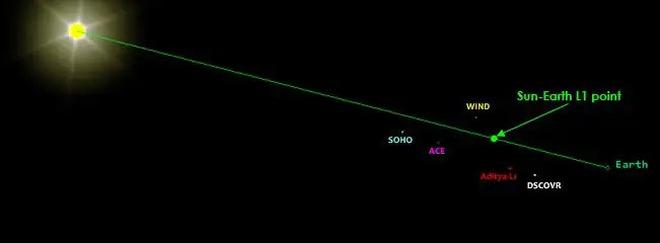While the Indian Space Research Organisation’s (ISRO) Aditya-L1 spacecraft is on its way towards the Sun-Earth Lagrange’s Point 1 (L1), the space agency has done an assessment of the space situation around L1 to ensure safety of the spacecraft.
Launched on September 2, Aditya-L1 is India’s first mission dedicated to studying the Sun. The spacecraft commenced its journey L1, on September 18 and is expected to reach L1 by January 2024.
Aditya-L1 will operate in a halo orbit around the Sun-Earth L1 point, located approximately 1.5 million kilometers from Earth.
According to ISRO, halo orbits are periodic, three-dimensional orbits around a Lagrange Point (L1, L2 or L3) and involve an out-of-plane motion component relative to the primary bodies. The orbit is large enough in size to be continuously viewed from Earth and would appear to form a halo around the Lagrange Points (here L1 for Aditya L1).

There are currently four operational spacecraft at L1- WIND, Solar and Heliospheric Observatory (SOHO), Advanced Composition Explorer (ACE) and Deep Space Climate Observatory (DSCOVER).
“Several operational spacecraft are currently stationed at the L1. These spacecraft at L1 provide vital early warnings on adverse space weather events that help protect orbiting space assets and ground-based infrastructure,” ISRO added.
Despite the extremely sparse population in L1 and the vast separation between them, close approach assessment for an operational spacecraft at Lagrange Point Orbit (LPO) is desirable because of the large positional uncertainty and sensitivity to other perturbative forces.
“Orbit Determination for LPO requires tracking data collection over an extended period of time, typically a few days. The typical Orbit Determination accuracy is of the order of a few km. For the Aditya L1 mission, ISRO plans to carry out such analysis periodically to ensure safety and avoid any possibility of close approaches with other neighbouring spacecraft, with the support from NASA-JPL,” ISRO said.







